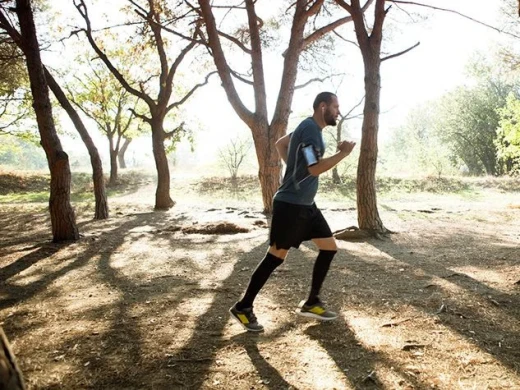
Runner's World
Cherie B. Miner, M.D.
Strengthen your weaker side to cut down on injuries.
A few years ago when Jim Rose was training for a half marathon, doing 35 to 60 miles a week in Colorado, he kept getting injured. Nearly 20 years of running had taught him that running and injury are often partners. But Rose was struck by an odd consistency. “My injuries in my calf, knee, ankle, hamstring, and hip were all in my left side,” he says.
A chiropractor told him one-sided running injuries were connected to being either right- or left-side dominant. After a few adjustments and some exercises to strengthen his weaker side, Rose recovered, but he continues to be dogged by occasional injuries, usually on his left side.
One-sided injuries of that sort are familiar to physical therapists, trainers, and sports physicians. “Running is a balancing act,” says Lynn Berman, a New York doctor of physical therapy at Spring Forward Physical Therapy. Our right and left legs perform a ballet of coordination and opposition as one pushes off while the other swings forward, he explains. “This coordinated effort breaks down when one side shows weakness.”
Most people would agree that one side of their body is stronger than the other. But that’s not the issue, says Derek Ochiai, an orthopedic surgeon at Nirschl Orthopaedic Center in Arlington, Virginia. “I don’t necessarily think it’s that one side is stronger, it’s that the other side is weaker than optimal,” he says.
When one side isn’t strong enough to bear the burden of extended running, it can lead to common injuries, including iliotibial band syndrome and patellofemoral pain syndrome, or runner’s knee. Injuries often center on the hips, and weakness in core muscles like hip adductors and abductors.
The appearance and result are similar to what we see with another common muscular imbalance, when muscles in the buttocks, like the gluteus medius and abductors, are weaker than quads and hamstrings. “Your hips tend to drop or tilt,” says Cherie Miner, a sports medicine physician at Andrews Sports Medicine and Orthopaedic Center in Birmingham, Alabama. “It will look like one side is dropping down.” When one hip drops, it can overstress the knee and other focal points for injury.
One common cause of left-right imbalance is running in one direction on a tilted roadway or track. “By running in the opposite direction, [athletes] can even it out,” says Gary Guerriero, a physical therapist and co-owner of U.S. Athletic Training Center in New York. “As much as every other workout, it should be reversed, so they maintain a balance.”
One-directional running isn’t the only cause, however. A previous injury can cause one side of the body to be weaker. Even consistently crossing one leg over the other can inhibit the strength of that side. Cross-train with bicycling, Pilates, and core routines.
Therapists, trainers, and physicians also recommend several exercises that can help strengthen a lagging side. Some you may already do, such as lunges, clamshells, and one-legged squats, with or without weights. Guerriero recommends assigning the non-dominant leg an extra set of these exercises. “Do each exercise unilaterally, and start and end on the weaker leg,” he says. “This way it’s getting a little extra work.”
Before you do that, you need to know which side is dominant. One way to identify your problem-prone side is to balance on one leg at a time for as long as you can. You should be able to stand longer on the dominant side. Another trick is to pretend you are standing on a surfboard. Most people naturally put their more stable foot in front.
Of course, nobody ever wrote a book called The Joy of Clamshells, and standing on one leg in a gym or living room does not compare with running down a beach or trail when it comes to pure pleasure. Rose admits that despite his history of injury, he struggles to keep up with assigned therapy. Guerriero, who treats professional and Olympic athletes in his practice, says runners at all levels have this issue.
“Everybody just wants to do the activity that they want to do,” Guerriero says. “But if they do this secondary stuff—the strengthening and flexibility exercises—it will prevent injury so they can enjoy what they’re doing.”







